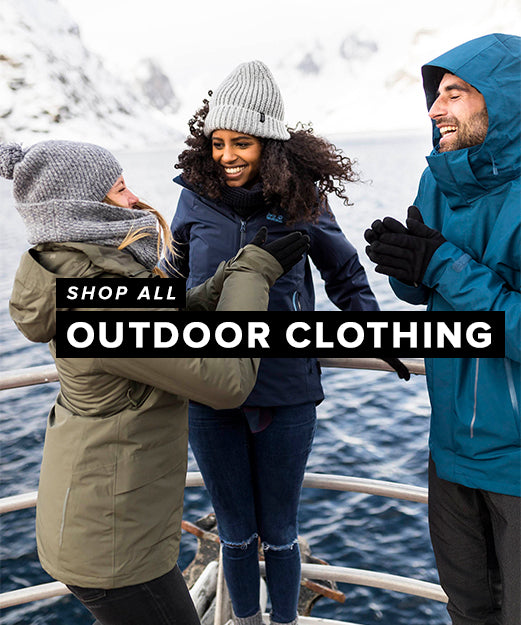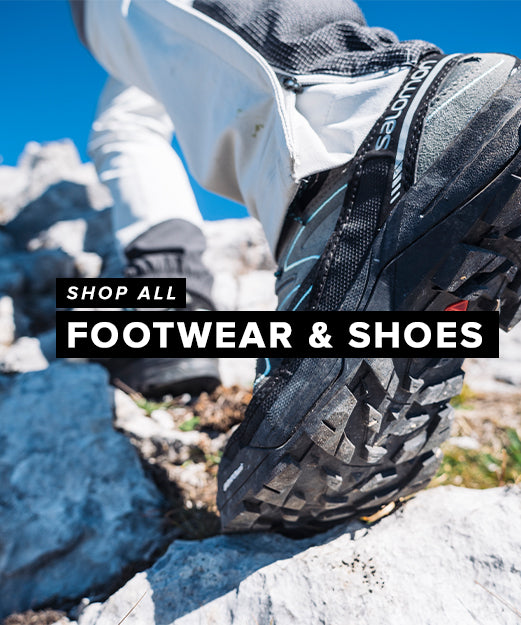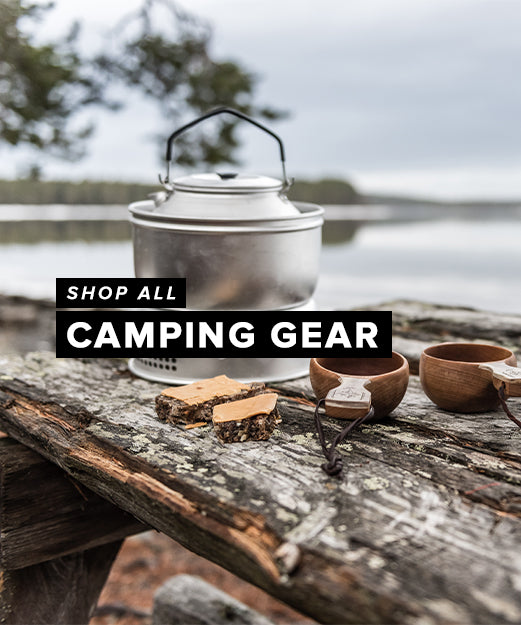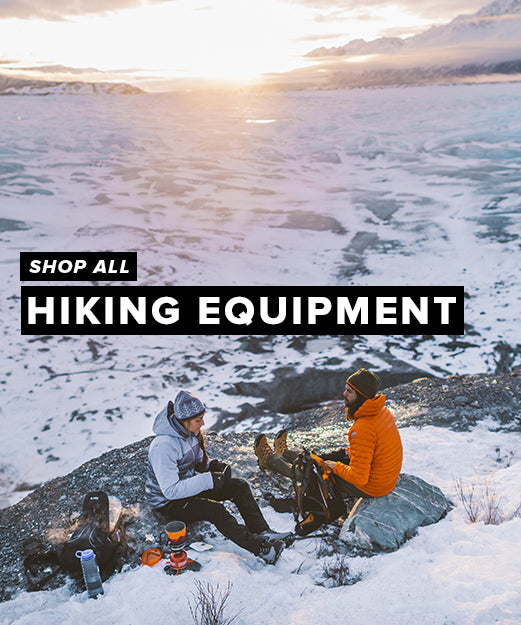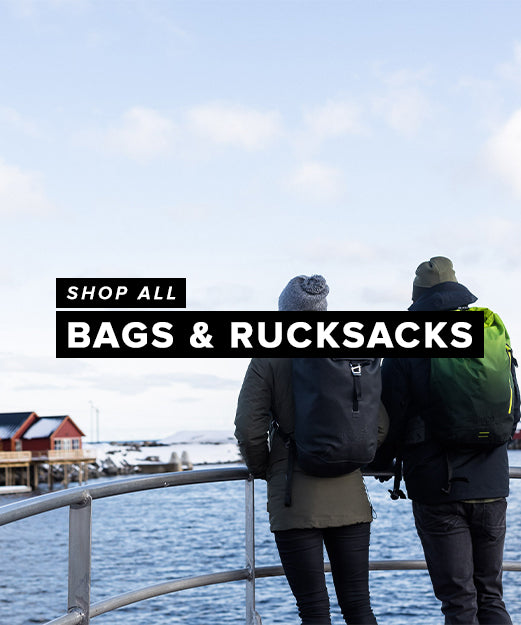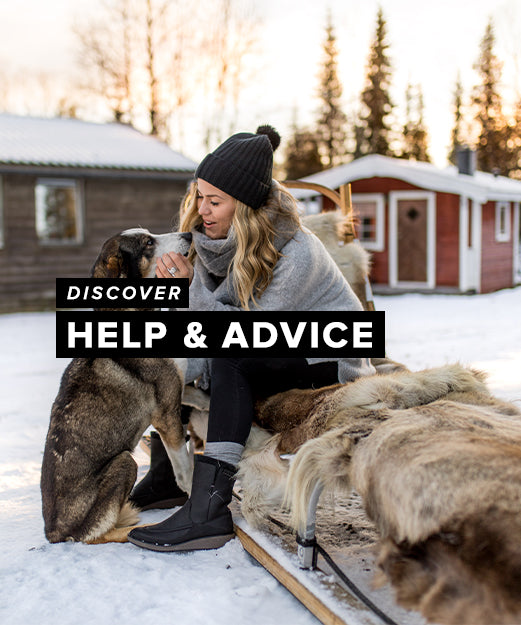Not sure what to take with you when you're wild camping? Our new video with mountaineering instructor and international mountain leader, Rob Johnson, tells you all the essentials you need to ensure you have a safe and enjoyable camping trip. Either watch the video above or read the full transcript below.
So here we go, the tent is up, and we are pitched for the night. Let's have a look at some of the kit that I've got with me. Just worth mentioning actually, it is quite breezy. And when it is windy like this, it's worth weighting your tent pegs down, perhaps picking some rocks up from nearby, and just putting them on the pegs. Be careful where you put them, if you put them on the fabric itself, you can end up ripping the fabric which, I may actually do on the end of my tent there. If you place it on the elastic, you can end up cutting through the elastic between the fly and the pegs there. So it's worth using some rocks just to weight down the pegs, but be careful you don't damage your tent in the process.
Something to lie on is important. So I'm using a Therm-A-Rest. This is a three quarter length. Western wild camping, and I'm trying to keep weight at a minimum. I find a three quarter length just allows me to have enough to lie on without having to carry too much excess weight. It's an inflatable one, so they're really nice and comfortable, and as you get older you'll appreciate your home comforts more. With that and your sleeping bag, it's really important that when your carrying them, you keep them in a dry bag. I've got an Exped dry bag here, and each piece of my kit is individually wrapped in dry bags. So that if whilst I'm out during the day, I open up my ruck sack to get something out of it, everything doesn't get soaked. Plus, ruck sacks aren't waterproof anyway. So anything that's in there, expect to get wet.
My sleeping bag lives in a dry bag, and actually it's double bagged. So here, it's in its own compression sack. And that just allows me to pack things down nice and small. There is an age-old debate really, do you want a down sleeping bag or do you want a synthetic sleeping bag? My preference is for down, this is made by PHD, who are specialist sleeping bag manufacturer here in the UK. It's super warm for the weight, and it does compress down really nice and small. The main issue with them is that you've got to keep them dry. So if you're in an environment where that's not gonna happen, then you are gonna need to choose synthetic over down. As I say, if you can be a little bit organized, and keep things dry and use your dry bags, then I think down is well worth a little bit of extra money.
Be really organized about keeping everything that's in that inner tent dry. We've got some really nice weather now, I haven't got a worry about the admin side of things. But on a wet day, I'm gonna be really, really organized and make sure that anything's wet stays in the porch of the tent or outside the tent. I only get dry stuff in the tent. So that will often mean quite an uncomfortable . . . getting into your porch, taking all your wet layers off, your wet boots and everything off. And leaving that in the porch of the tent, whilst you get inside. But it's well worth that little bit of effort. It keeps everything inside dry, and it becomes your little place of sanctity from the weather. Once things start getting wet in there, it can be a really grim place.
I've got something to lie on, and something to lie in. And then I generally just fold my clothes up and use that as a pillow. I've got my head torch, which is going to be pretty handy, because it will soon get dark. And I need that for inside the tent, and then nipping to that loo of an evening as well. So I will keep that handy. And then something to cook on. This is my choice of stove, and there's a whole wealth of stoves available on the market. I'm not gonna go into a massive amount of depth on stoves. That will be a separate video, I'm sure. My choice for UK summer wild camping is a gas stove, and I'm using a Jetboil here. Simply because it packs down so nice and small. It's all integrated in one system. I've got my gas. I've got my burner, and I've got my pan, all come together. My top tip with these is it's worth bringing some other form of fire lighting, because the Piezo ignition can be a little bit unreliable at times. So bring some other form of ignition as a backup.
I've used the boil-in-the-bag type meal so that I can put water in my pan, cook it in the pan, and then I haven't got a worry about any washing up. This is a titanium pan, so I don't want to get food and stuff on it. It's just going to be a devil to clean. So keep it nice and simple. For summer, gas works fine. I guess our main consideration with stoves is cooking away from our tents. We've got a fire hazard, and a we've got a carbon monoxide hazard. So cooking well away from the tent solves both of those problems. If you're out in truly foul weather, and you feel that you've got no choice but to cook in the tent, make sure that perhaps you are in the tent and the stove is outside. Make sure you're well ventilated, and you're gonna be really, really careful about any fire hazard. If the flame touches your tent, that's it. You will be amazed how quickly that tent rapidly disappears around you. Stove safety, I guess, the number one priority with our stoves. You can buy my multi-fuel stoves, and that would be my choice in a winter environment where things are a bit colder. Gas doesn't perform quite so well in the cold, but for UK summer, a gas stove will be absolutely fine.
The final piece of kit to think about is water purification. You can do that with your stove. You collect your water from the stream and boil it, and once you've got a rolling boil on the water it will be safe for you to drink. Lots of bubbles, no troubles. You might also wanna consider a SteriPEN. So I use these here in the UK, as well as sort of our overseas expeditions. A SteriPEN with a set batteries will last me a month in somewhere like Nepal with no trouble at all. So if you're going to need to be constantly purifying all the water on a multi-day trip, this is perhaps a bit more convenient than having to boil water all the time. This works just on UV light. It's battery operated. You turn it on, you stick it in your flask, and you hold it in there for a minute until it changes color. That will treat your water, and make your water safe for you to drink. So there we go. The essential kit for our backpacking wild camping here in the UK. I hope that's been useful.
Have you been wild camping before?
 NEW!! Free UK Delivery
NEW!! Free UK Delivery Hassle-Free Returns
Hassle-Free Returns Clearpay
Clearpay


